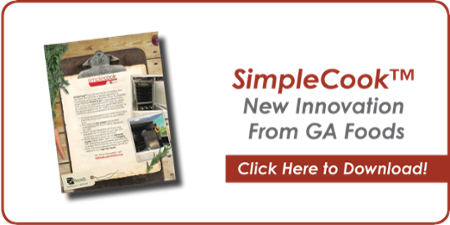
With nearly 1 in 6 seniors facing the threat of hunger and malnourishment, food insecurity is now a nationwide epidemic that is getting more expansive by the day. And with a yearly healthcare bill of $130 billion due to medical issues stemming from senior hunger, it’s also getting more expensive.
As defined by a study published in the Journal of Nutrition, being food insecure means having “limited or uncertain availability of nutritionally adequate and safe foods or limited or uncertain ability to acquire acceptable foods in socially acceptable ways." In other words, seniors aren’t receiving, or don’t have access to, the necessary food and nutrients to help sustain their life. And while Social Determinants of Health plays a major role in this as previously discussed, there are many additional factors.Living alone, for example, often plays a part when seniors lack the ability or mobility to cook for themselves – and don’t have a companion to help prepare meals or get what’s needed from a store. Age is another important factor at play. A recent National Foundation to End Senior Hunger (NFESH) report showed that as seniors aged, they were less likely to be any level of food insecure, with those under 70 (20 percent) living at a higher level of food insecurity than those over 80 (14 percent). While these findings may be surprising to some, they can be attributed to different circumstances, such as money received from programs like Medicare (which can often alleviate medical costs so that more can be spent on food) and whether or not they live in an assisted living facility, which may help with more consistent eating habits.
Sadly, some of these challenges are unlikely to change, but that’s also why more and more organizations are working to collaborate and combat senior hunger by offering resources that are easily accessible. We’ve explored some below.
Assistance Programs
For seniors looking to take the first step in getting assistance, the Supplemental Nutrition Assistance Program (SNAP) is a great place to start. From state agencies to nutrition educators, they work with various individuals and organizations to ensure that eligible seniors get the assistance and benefits they need to eat better, or in some cases, eat at all. For anyone unsure about eligibility, the National Council on Aging has created an online benefits checkup.
National Foundations & Non-Profits
As some challenges for seniors are growing, so are opportunities, thanks to organizations like NFESH, that are working with states, area agencies, and congregate nutrition programs to develop research and solutions through a wide range of projects. But this is just one of many. The nation’s largest non-profit organization, AARP, started the Drive to End Hunger campaign in 2011 to help raise awareness around food insecurity in seniors and establish permanent solutions through various high-level partnerships.
Meal Delivery Services
Organizations like Meals on Wheels America are leading the charge in fighting senior isolation and hunger with a staff and volunteer base that is now two million strong. By working to keep funding, leadership, education, and support coming to their community member programs, they are helping seniors across the country one meal - and friendly visit - at a time. And because of the advocacy and support generated by organizations like Meals on Wheels, smaller-scale meal delivery services are focusing their efforts on food insecurity and making it easier for seniors everywhere to get the nutrition they need.
Too many of our nation’s seniors are struggling with hunger. But by coming together to continue the conversation and the fight, we can bring it to an end once and for all.











